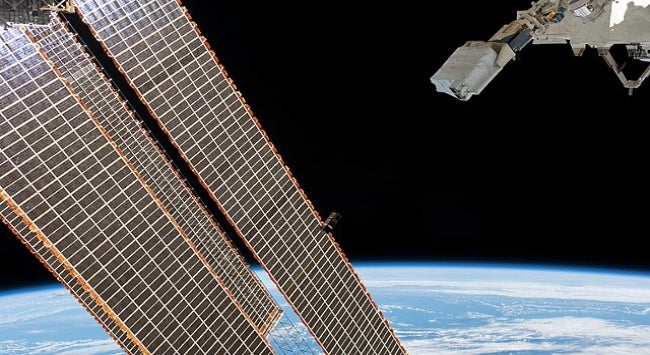Nurturing an India-Singapore Space Accord
Karthik Nachiappan, Mriganika Singh Tanwar
20 November 2025Summary
Space represents an important area of future collaboration for India and Singapore with the sector generating prospects and projects that are increasingly commercially viable and practically useful.
The burgeoning private space industry or ‘new space’ in India and Singapore has shifted the focus from large-scale government-led projects to a commercially viable and market-driven approach to space exploration and utilisation. Considerable interest exists to deepen bilateral space cooperation. Moreover, the space industry’s expansion is fuelled by a growing demand for satellite technology, telecommunications, navigation and related critical applications, presenting greater opportunities for collaboration between both governments and space firms.
India
India’s space policy has undergone a significant transformation – from prioritising socioeconomic development to pursuing national prestige and security. In 1969, the Indian Space Research Organisation (ISRO)was established with the primary objectives of creating communication and remote-sensing satellites, a space transportation system and an applications programme. In June 2020, India liberalised its space industry by easing regulatory constraints for space enterprises, as it saw the need to have end-to-end service providers in the space industry. Soon thereafter, the Indian National Space Promotion and Authorisation Centre (INSPACe) was established to upgrade the ISRO’s infrastructure and provide clear guidelines for private companies and non-governmental entities on satellite manufacturing, launch vehicle development and ground systems operations. India’s embrace of low Earth orbit satellite constellations can deliver low-latency internet and support the government’s telecommunication infrastructure for bandwidth-intensive applications such as e-governance, videoconferencing, telemedicine, high-definition video streaming and remote education.
New Delhi also eased the existing foreign direct investment regulations in the space sector, allowing 100 per cent foreign investment in manufacturing components and sub-systems for satellites, 74 per cent in satellite manufacturing and operations and 49 per cent in launch vehicles and associated systems. The number of space startups has surged from one in 2022 to over 200 in 2024. The government has established a US$114 million (S$139 million) Venture Capital Fund and a US$57 million (S$74.5 million) Technology Adoption Fund, both managed by INSPACe, to address the high-risk nature of space technology ventures and provide critical funding for India’s space start-ups. Skill development initiatives, including partnerships with academic and research institutions, are equipping India’s workforce with expertise in satellite technology, data analytics, and advanced manufacturing.
Singapore
Singapore has a nascent but fast-growing space ecosystem that builds on the country’s strengths in advanced manufacturing, microelectronics, aerospace engineering and research and development (R&D). Singapore’s space journey began in 1998 with the launch of its first national satellite, ST-1 – a joint venture between Singapore Telecommunications and Taiwan’s Chunghwa Telecom. In 2013, the Office for Space Technology & Industry (OSTIn) was created to seize economic opportunities, develop space policies and nurture indigenous space-technology capabilities. Currently, Singapore has about 70 space companies, with around 2,000 professionals and researchers engaged in a wide range of activities across the space sector value chain – from designing and manufacturing space components to providing satellite-based services.
Singapore is well-placed to capitalise in the thriving global space economy. It is a leading hub for businesses and innovation. In 2022, OSTIn launched its flagship Space Technology Development Programme (STDP) to fund space innovation and research in nationally important sectors like aviation, maritime, and sustainability, and to create disruptive technologies. OSTIn is also exploring new opportunities in the space economy, like on-orbit servicing, in-space manufacturing, and space life sciences. As part of the STDP, US$118 million (S$150 million) was allocated for the R&D of space capabilities. The STDP supported several projects, such as very low Earth orbit satellite technologies and Quantum key distribution satellite solutions. Recently, Singapore announced a new space strategy, Development, to boost technological innovation, foster skill development through Singaporean institutes of higher learning and research institutions and promote the commercialisation of space research.
India-Singapore Space Cooperation
India and Singapore can deepen space cooperation. Indian space agencies are known for their low-cost launches. The government has been working to increase the frequency of launches across various locations. Singapore’s small space sector faces challenges with a lack of testing and launching facilities for its satellites. Singapore shifted its focus towards developing niche satellite technologies like small satellites and leveraging its strengths in deep technology, data analytics and artificial intelligence R&D. Singapore is collaborating with India in launching space assets as a provider, facilitator, and user.
Bilateral cooperation can be expanded in several ways:
- Space Exploration: India’s well-established space sector and Singapore’s niche in these small satellite technologies, along with investment capabilities, can be used for space exploration activities.
- Environmental Mapping: Singapore’s earth observation technologies monitor, manage and mobilise real-time data on a wide range of environmental scenarios. Going forward, satellites can be used to monitor natural hazards, disasters, maritime activity, and weather patterns.
- Supply Chain Management: Both countries can deepen cooperation on using satellites to improve supply chain management and operations. Businesses can reduce their supply chain management cost through communication, navigation, positioning and timing information obtained through satellites.
- Global Space Governance: India and Singapore can influence international norms surrounding space sustainability, reducing orbital congestion and debris, commercial space activity, cybersecurity, and placement of nuclear, conventional and anti-satellite weapons in outer space.
. . . . .
Dr Karthik Nachiappan is a Research Fellow at the Institute of South Asian Studies (ISAS), an autonomous research institute at the National University of Singapore (NUS). He can be contacted at isaskn@nus.edu.sg. Ms Mriganika Singh Tanwar is a Research Analyst at the same institute. She can be contacted at m.tanwar@nus.edu.sg. The authors bear full responsibility for the facts cited and opinions expressed in this paper.
Pic Credit: Wikimedia Commons
-
 More From :
More From :
-
 Tags :
Tags :
-
 Download PDF
Download PDF



